
8 minute read
remedios y sus Coloridas parrandas
Remedios and its colorful Parrandas
Culture, heritage, traditions and music await visitors curious to discover more about Cuba in this legendary town in the central province of Villa Clara.
A site full of charms and values, San Juan de los Remedios has a great history and interesting legends to be unveiled. Its historic downtown, in an excellent and well-preserved situation, is one of the places not to be missed, as well as the museum that exhibits the memory of its Parrandas, one of the oldest traditions of Cuba that are still held after more than two hundred years.
Cultura, patrimonio, tradiciones y música aguardan al visitante curioso por descubrir más de Cuba, en esta legendaria localidad de la central provincia de Villa Clara. Plaza de encantos y valores, San Juan de los Remedios posee una gran historia e interesantes leyendas por develar. Su centro histórico urbano, en excelente estado de conservación, es uno de los sitios de ineludible visita, así como el museo que expone la memoria de sus parrandas, una de las más antiguas tradiciones de la isla que aún se celebran, luego de más de doscientos años. Textos y fotos Texts and photos: Bienvenidos

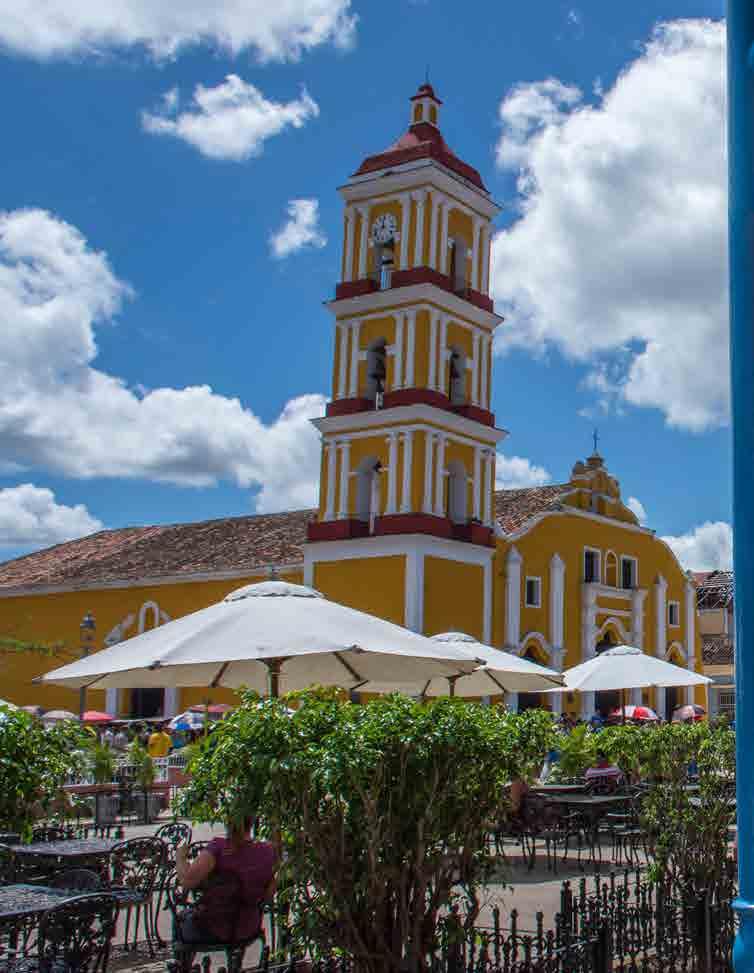
Remedios y sus coloridas parrandas
Remedios fue fundada en el primer cuarto del siglo XVI, más específicamente el 24 de junio de 1545 -día de San Juan Bautista, santo que dio nombre a la villa. Su centro fundacional, que se erige en torno a una plaza, como todas las antiguas villas coloniales, se distingue por ser el único del país custodiado por dos iglesias católicas: la de Nuestra Señora del Buen Viaje y la Parroquial Mayor de San Juan Bautista. Pero el elemento más especial de este mítico poblado son sus célebres parrandas, colorida fiesta anual que atrae a visitantes de toda la isla y del mundo.
Remedios was founded in the first quarter of the 16th century, more specifically on June 24th, 1545, the day of St. John the Baptist, the saint after whom the town was named. Its foundational center, which is built around a square, like all the old colonial towns, is distinguished for being the only one in the country guarded by two Catholic churches: Nuestra Señora del Buen Viaje and Parroquial Mayor de San Juan Bautista. But the most special element of this mythical town is its famous Parrandas, a colorful annual festival that attracts visitors from all over the country and the world.

Las Parrandas de Remedios
Surgieron en la segunda década del siglo XIX, en víspera de la Navidad. Cuentan que el entonces sacerdote del poblado, viendo el desinterés de los feligreses por la celebración, estimuló la idea de halagar el nacimiento de Dios y así, sin saberlo, aquel 24 de diciembre marcó el origen de uno de los festejos cubanos tradicionales más significativos: las Parrandas remedianas.

Parrandas of Remedios
They were born in the 1820’s, on Christmas eve. It is said that the then priest of the town, seeing the apathy of the faithful for the date, encouraged the idea of celebrating the birth of God and thus, without knowing it, that December 24th marked the origin of one of the most significant traditional Cuban celebrations: Parrandas of Remedios.
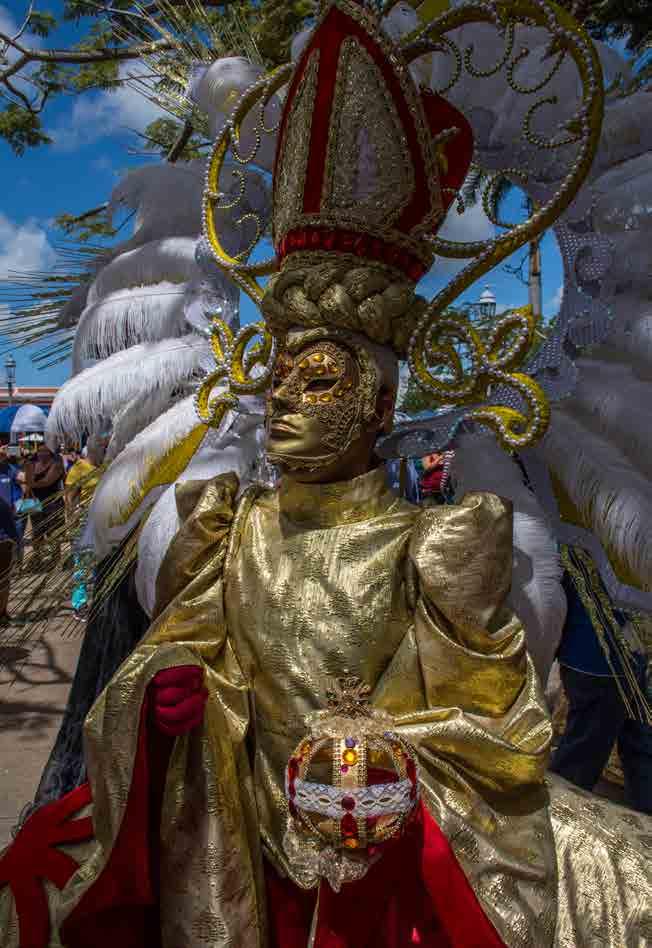

Reconocidas en el 2013 como Patrimonio Cultural de la Nación, estas fiestas tienen como base, el desafío entre los barrios San Salvador y El Carmen, en los que se divide el poblado. El divertido encuentro es el resultado de meses de maniobras, actividades planificadas, carrozas y trabajos de plaza, un conjunto de artificios que salen a la luz la noche del 24, en medio de revuelos, música, luces y algarabía. Es entonces, que se develan las sorpresas que cada bando ha sido capaz de fraguar, en el más tácito de los secretos.
El repiqueteo de las campanas y de los fuegos artificiales da inicio al espectáculo que todos esperan con ansia y curiosidad. Y en instantes, se hace la magia en Remedios, los del barrio de San Salvador, elevan el gallo como estandarte y los vecinos del Carmen, muestran su globo y gavilán, como blasón. Comienza el esperado duelo cultural y, entre asombros y maravillas, transcurre la noche más deseada, festiva y extendida del año, que no terminan hasta que amanece. Un genuino agasajo a la vida.

Declared in 2013 as Cultural Heritage of the Nation, these festivities are based on the challenge between the San Salvador and El Carmen neighborhoods, into which the town is divided. The amusing gathering is the result of months of work, planned activities, floats and work in the plaza, a set of fireworks that are brought to light on the night of the 24th, in the midst of excitement, music, lights and noise. It is then, that the surprises that each side has been able to forge, in the most sacred of secrets, are revealed. The tolling of the bells and the fireworks start the show that everyone awaits with eagerness and curiosity. Meanwhile, the magic happens in Remedios, those from the San Salvador neighborhood raise the rooster as a banner and the inhabitants of El Carmen show their balloon and sparrow hawk as their coat of arms. The awaited cultural duel begins and, among astonishments and wonders, the most awaited, festive and long night of the year takes place, which does not end until dawn. A genuine celebration of life.
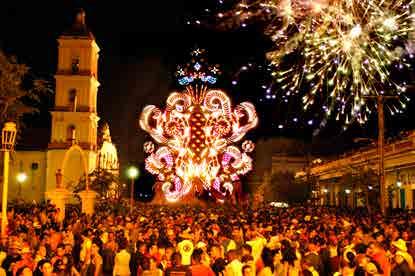
La aventura es espléndida y memorable. Muchos repiten al año siguiente porque la experiencia siempre es novedosa. Por eso, si diciembre le sorprende en Cuba, no dude en visitar Remedios, no solo será bienvenido, sino que su idea de jolgorio quedará totalmente matizada, llena de inventiva y música e iluminada por los colores siempre chispeantes de los fuegos artificiales.
The adventure is magnificent and unforgettable. Many people come back the following year because the experience is always new. Therefore, if December surprises you in Cuba, do not hesitate to visit Remedios, not only will you be welcome, but your idea of fun will be totally nuanced, full of creativity and music and enlightened by the always sparkling colors of the fireworks.

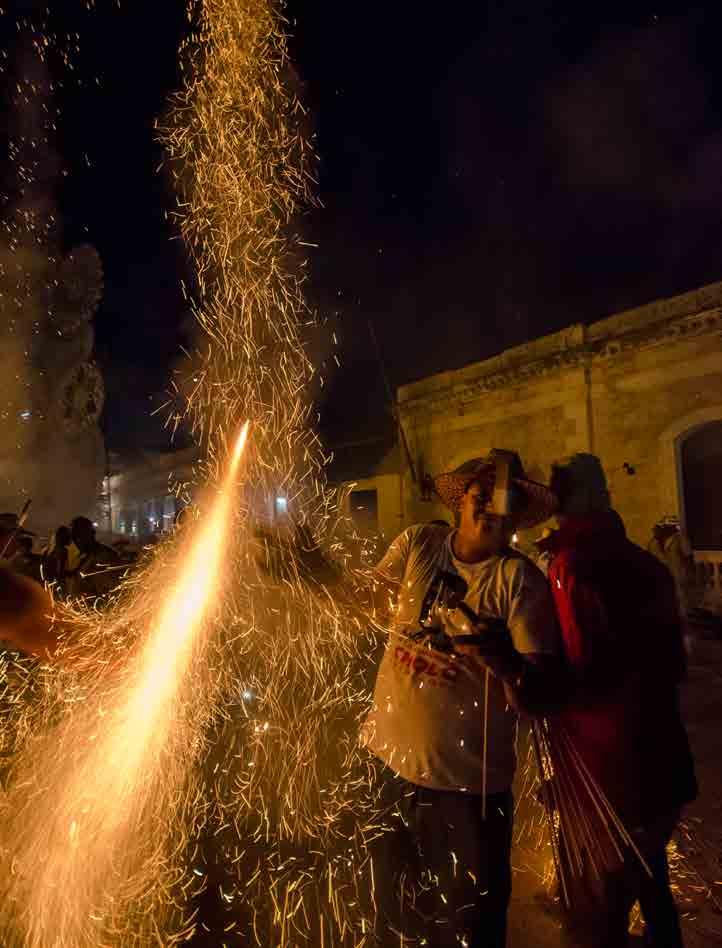



El Día Internacional de los Museos es motivo de celebración en Cuba cada 18 de mayo. Esta fiesta del patrimonio cultural se celebra en la isla cada año desde 1977 y es un signo más de la importancia que se le da a la conservación de la memoria histórica material en Cuba.
Looking to the future
Wealth management in Cuba
International Museum Day is celebrated in Cuba every May 18. This cultural heritage festival has been held on the island every year since 1977 and is another indication of the importance given to the preservation of Cuba's material historical memory.

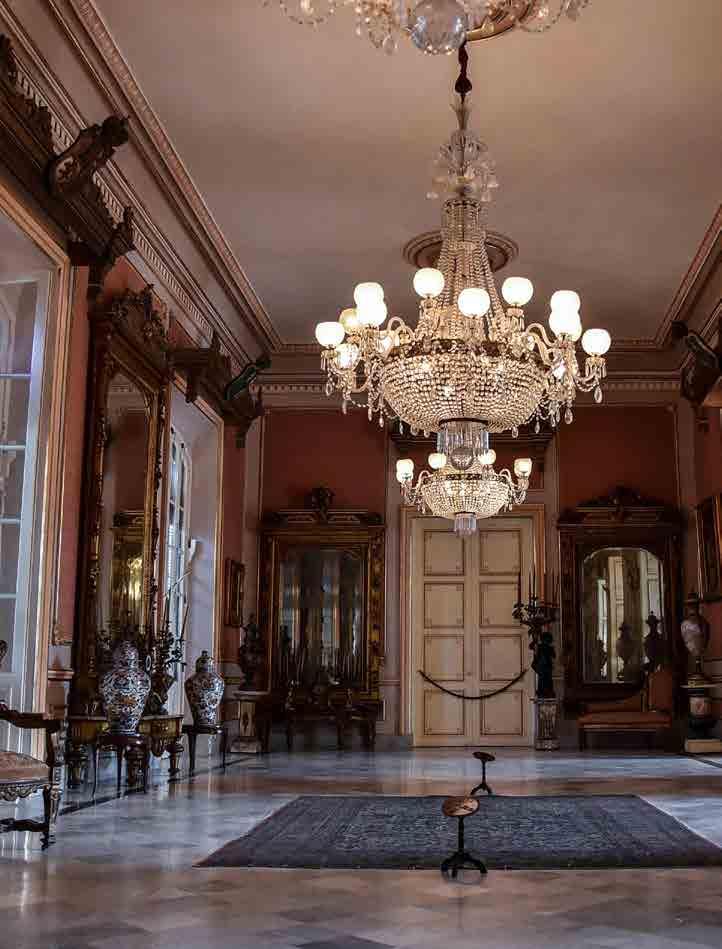
La conservación del patrimonio en Cuba
Desde 1947, Cuba se inscribe como miembro activo del Consejo Internacional de los Museos. La nación caribeña mantiene una clara política de protección del patrimonio cultural mediante una legislación que ampara al sistema nacional de museos, en el que se inscriben 340 instituciones de este tipo de todo el país.
En la isla pueden encontrarse museos de una variada tipología, que comprenden áreas del saber tan extensas como la historia, las artes, la arqueología, la filatelia, la numismática, la tecnología y la etnografía. Gran parte de esa tradición museística le llega a la isla desde el siglo XIX, momento en el que se comenzó el rescate de objetos y documentos de importancia histórica. Esta iniciativa ha permitido que, hoy en día, los museos cuenten con importantes colecciones históricas que pueden ser puestas a disposición de los visitantes e investigadores nacionales y extranjeros.
Heritage conservation in Cuba

Since 1947, Cuba has been an active member of the International Council of Museums. The Caribbean island has implemented a strong policy of safeguarding cultural heritage through several laws that protects the country's national museum system, which includes 340 museums throughout the country. Cuba is home to a wide variety of museums, covering areas of knowledge as broad as history, fine arts, archeology, philately, numismatics, technology and ethnography. Much of this museum tradition comes to the island from the 19th century, when the rescue of objects and documents of historical relevance began. As a result of this program, museums now have significant historical collections that can be made accessible to national and international tourists and scholars.

Los museos en sintonía con la comunidad


En la isla, los museos tienen una relación activa con la comunidad en la que radican. El lazo que comparten permite que estas instituciones patrimoniales estén en constante actualización de sus discursos, en dependencia de las diferentes necesidades culturales que presente el medio que las rodea. De esta manera, los museos actúan como promotores de una educación patrimonial local y nacional, a tono con el objetivo de conservación de las instituciones. Para lograr un diálogo claro y eficaz con su comunidad, los museos implementan un diseño gráfico contemporáneo con el que los visitantes pueden identificarse. Estos cambios, que deben estar siempre en sintonía con las dinámicas sociales modernas, buscan mantener el importante lazo colección-público y forman parte de las propuestas conceptuales generales de la Museología de todo el país.
Museums that are in touch with the community
Museums on the island have a close association with the communities in which they are situated. Because of this valuable connection, these heritage institutions are able to continuously update their discourses in response to the different cultural needs of the environment that surrounds them. Therefore, museums serve as promoters of local and national heritage education, which is in line with the institutions' conservation goals.
To achieve a clear and effective dialogue with their community, museums are currently aiming at using designs that visitors can identify with. These changes, which must always be in tune with modern social dynamics, seek to maintain the important collection-audience link and are part of the general conceptual proposals of museum studies throughout the country.
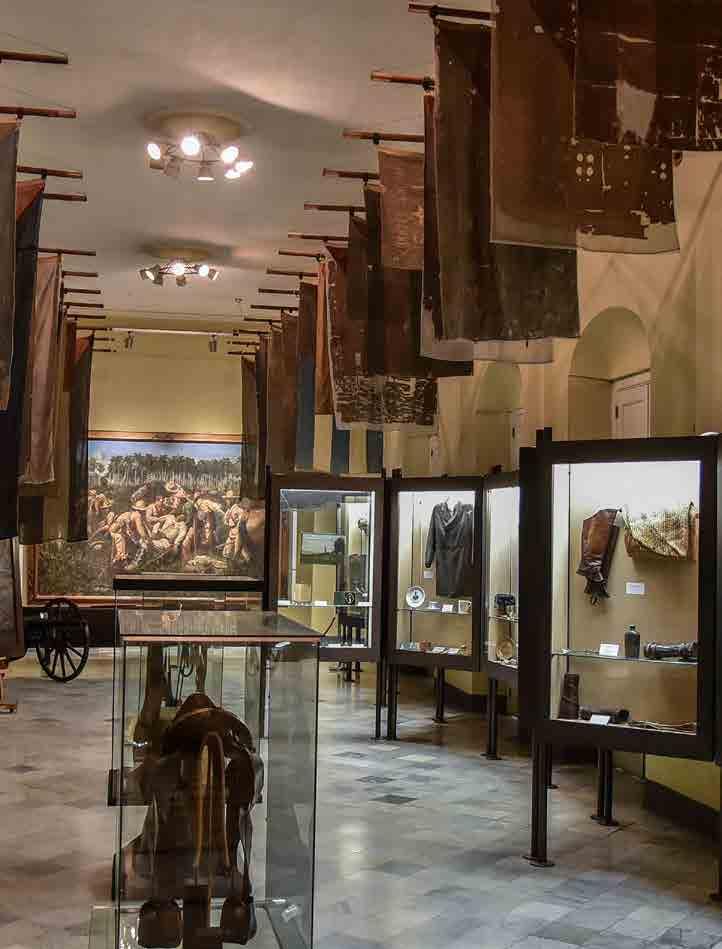

El reto actual para los museos es mantener un diálogo entre el respeto por las colecciones y el patrimonio y el sentir de una comunidad que está en constante generación de su propia historia. Los museos no deben ser vistos solamente como casas que custodian piezas históricas sino también como espacios en los que se guarda y se construye la idiosincrasia de un país.
Recuperar y reimaginar el futuro de los museos en Cuba
Este 2021, como motivo de las celebraciones por el Día Internacional de los Museos se lanza el slogan “El futuro de los museos: recuperar y reimaginar”. Así, los museos en la isla se proponen adaptarse a las nuevas realidades tecnológicas e introducirse en la virtualidad. Las colecciones permanentes y transitorias de cada una de las instituciones patrimoniales serán socializadas de manera online, con la ayuda de discursos más incluyentes que reflejen los intereses y valores de la sociedad cubana actual.
No hay mejor manera de celebrar este día que con la aplicación de nuevas formas de mostrar el patrimonio cultural de un país, un camino que lleve a la constante renovación y construcción de un pensamiento capaz de generar una visión de futuro.
The current challenge for museums is to strike a balance between respect and preservation, which of course involves individual collections and the collective wealth of the island. Likewise, these institutions are concerned with the feelings of a community that is constantly generating its own history. Museums should not be understood only as shrines that guard historical pieces but also as spaces where the idiosyncrasy of a country is kept and built.
Recovering and reimagining the future of museums in Cuba
This 2021, on the occasion of the International Museum Day, an initiative has emerged under the motto: "The future of museums: recovering and reimagining". Thus, museums on the island intend to adapt to the new technological realities and enter the virtual world. The permanent and transitory collections of each of the heritage institutions will be exhibited online, with the help of new inclusive discourses that enhance the interests and values of modern Cuban society.

There is no better way to celebrate this International Museum Day than with the application of new ways to show the cultural heritage of a country, a path that leads to the constant renewal and construction of society's mindset, which may be able to create a vision of the future as well.









